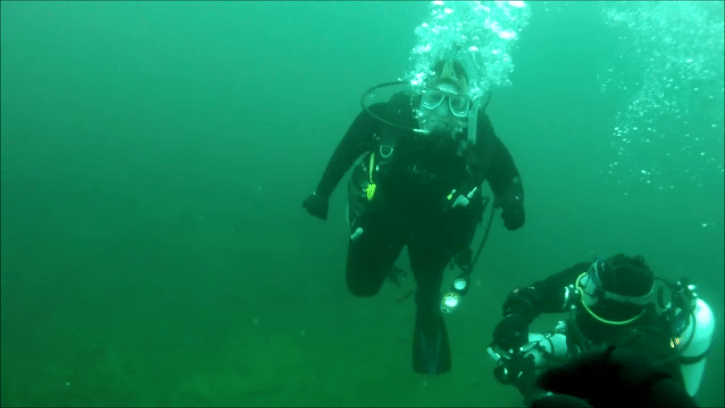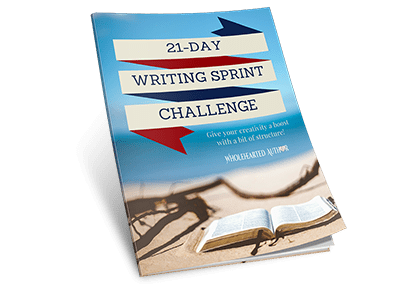I recently had a great, and at the same time miserable, experience. I’m working towards my Advanced Open Water PADI Scuba Diving certification, and completing the Deep Dive is one of the tasks I selected. I knew it would be tough, and I dreaded it. I had to build up my confidence. I should have built up more, specifically, my lung capacity and energy level. I was sucking wind at the end of the dive, and my buddies tactfully towed me to the shore, allowing me time to cough and sputter.

I’m talking about younger, in-shape men who dove with me, as we explored one wreck after the other.
I held my own for the first 15 minutes or so, then I was huffing and puffing and focusing on not panicking. See, when I huff and puff, the carbon dioxide levels build in my bloodstream and less oxygen goes to my brain. My brain is demanding more oxygen, and even though it is getting enough, it wants more. When this happens, the brain kicks into survival mode. This means it takes intense concentration and willpower not to bolt to the surface.
The most difficult part of the dive was to ignore the impulse to bolt. If I had, I would have encountered compression illness (the bends), because we were diving 80 feet below the surface.
Let’s be honest. I am an older, overweight and sedentary woman. I’m a writer, so most of my work is done at a desk. During the Fall and Spring college semesters, I teach college classes that require standing, so that’s about as active as I get. You get the picture. I’m a blob sitting at a computer.
My Scuba Instructor, Frank Morrow of A Water Odyssey Scuba, always tells me I have to push myself, and I agree. But that’s as far as I take it. How do we prepare mentally to prepare physically for the difficult when we’re sedentary blobs?
When my Doc tells me to exercise, I nod my head and agree, and say, “Yes, you’re right. I need to walk more.” Then I conscientiously take the stairs instead of the elevator out to my car, and head home to my office to sit, once again, at a computer.
I’ve recently read articles that report that thinking about muscles and the effect of exercise is almost as good as exercising. That can’t be right, can it? If so, then maybe I can exercise while I’m sitting on the sofa at night, watching television with my husband.
According to Dr. Joseph Mercola, thinking about exercise does increase muscle mass. There’s a hitch, though. It’s about reciprocity. He writes, ” Just as your thoughts may be able to alter your physical body, physical exercise also protects and beneficially alters your brain.”
Here are some tips he shared:
- Get 15-30 minutes of physical exercise each day. When exercising, think about using your brain to control your actions.
- Spend about five minutes every day working on the refinement of a specific, small domain of your physical body.
- Find ways to engage yourself in new learning as a continuous aspect of your life, such as taking on new hobbies, learning new skills
- Stay socially engaged
- Practice “mindfulness,” in which you’re attentively focusing on the world around you again, as if you’re seeing it for the first time.
Notice that the Number One tip still says you have to exercise, even if you are thinking about it to increase muscle mass. Guess I still have to do the difficult.
Ready for a Challenge?
Have even more fun when you accept the 21-Day Writing Sprint Challenge. This process is one I use every semester with my college students, so I know it can kickstart your creativity and introduce structure to your writing schedule. When you join my Circle of Writers & Authors, you’ll receive FREE writing resources, and you’ll sign up for my newsletter. I will not sell your information, or spam you. I will send you updates about new articles and podcasts I’ve created, and projects I’m working on. You can unsubscribe at anytime. Read my Privacy Policy here.
Wholehearted Author is for you if you are …
- Starting out as a writer and could use some guidance
- Wanting to be inspired to create and publish your book
- Looking for like-minded, happy people and helpful mentors
- Hoping to turn your writing into a full-time, awesome career
- New to the concept of “permission marketing” but willing to try
CATCH THE WEST WIND
Add WEST WIND to your library!
If you love a good mystery, a romantic whodunit that will surprise you, then WEST WIND is a great addition to your ebook library.
West Wind is my third novel as an author of Contemporary Fiction, Suspense, Thriller, and Romance. It’s FREE too, when you join my exclusive Readers Group. Join today and download your free book, and as a special thank you, you’ll receive a SECOND FREE BOOK tomorrow! The giving goes on and on when you become my fan.
When you join my Readers Group, you’ll receive updates about new projects I’m working on. You can unsubscribe at anytime. Read my Privacy Policy here.
















